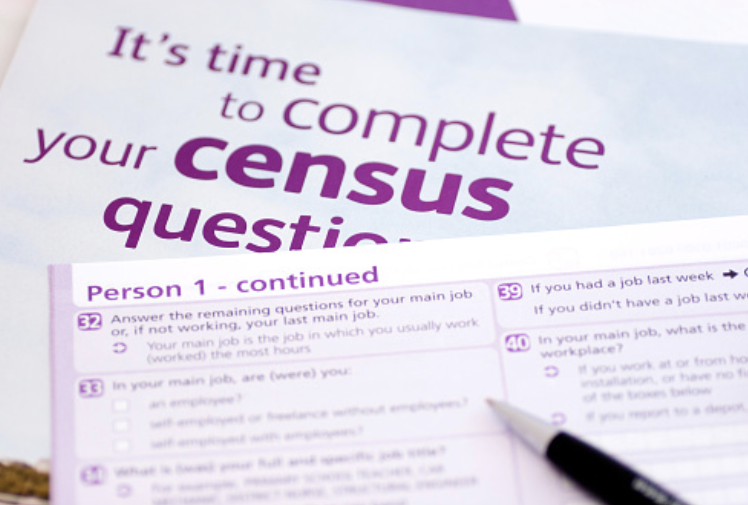
Scammers are targeting the 2021 Census to steal personal information and financial details, experts have warned.
Scammers are targeting the 2021 Census to steal personal information, experts have warned. Households across the UK are required to complete the Census before 31st March or risk fines of up to £1,000. And criminals are using the survey to steal national insurance numbers and other crucial pieces of personal information through phishing emails. Tony Pepper, the CEO of cybersecurity firm Egress, said:
"In the last year, we’ve seen phishing scams rise dramatically, with cybercriminals taking advantage of everything from Christmas shopping to coronavirus vaccines. "Unfortunately, with the 2021 Census approaching, cybercriminals are once again sending phishing emails and text messages aimed at tricking recipients out of their sensitive data, such as financial information or National Insurance numbers."https://twitter.com/actionfrauduk/status/1370003739453628418 When filling out the census, families will be asked for personal details such as date of birth, occupation and home address. You will never be asked to provide a National Insurance number or financial details. Mr Pepper added:
"When it comes to phishing, our advice is always the same: make sure to hover over any links before clicking, and check the sender’s full email address to determine whether it looks genuine – the Office for National Statistics, which is carrying out the census, will only ever contact you from the noreply@help.census.gov.uk email address. "If you have received an email or text message requesting your information for the census and it’s from a different email address, we’d urge you to notify Action Fraud using its online reporting service."Action Fraud's guidance on scam emails noted that fake emails often display some of the following characteristics: The sender’s email address doesn’t tally with the trusted organisation’s website address. The email is sent from a completely different address or a free web mail address. The email does not use your proper name, but uses a non-specific greeting like “dear customer”. A sense of urgency; for example the threat that unless you act immediately your account may be closed. A prominent website link. These can be forged or seem very similar to the proper address, but even a single character’s difference means a different website. A request for personal information such as user name, password or bank details. The email contains spelling and grammatical errors. You weren't expecting to get an email from the company that appears to have sent it. The entire text of the email is contained within an image rather than the usual text format. The image contains an embedded hyperlink to a bogus site. Read more local stories from Your Harrogate here.



 Works to start on James Street in Harrogate
Works to start on James Street in Harrogate
 Harrogate Paralympic powerlifter to represent Team GB
Harrogate Paralympic powerlifter to represent Team GB
 Ripon classic car gathering to return this weekend
Ripon classic car gathering to return this weekend
 'A bad idea': Ripon council objects to lower speed limit on A61
'A bad idea': Ripon council objects to lower speed limit on A61
 Olympics to be screened at Victoria Shopping Centre
Olympics to be screened at Victoria Shopping Centre
 Harrogate cyclists set off on 600km fundraising trip to Paris
Harrogate cyclists set off on 600km fundraising trip to Paris
 Harrogate care home shortlisted for national luxury care award
Harrogate care home shortlisted for national luxury care award
 Amateur Harrogate football club helps men kick excess weight
Amateur Harrogate football club helps men kick excess weight
 Harrogate charity ball raises £14,000 to combat loneliness in older people
Harrogate charity ball raises £14,000 to combat loneliness in older people
 Harrogate's new MP speaks in Parliament for first time
Harrogate's new MP speaks in Parliament for first time
 New Harrogate outpost launched off coast of Africa
New Harrogate outpost launched off coast of Africa
 Maltkiln developer updates proposals for 4,000-home settlement
Maltkiln developer updates proposals for 4,000-home settlement
 Harrogate bus firm awarded world's top quality and safety benchmarks
Harrogate bus firm awarded world's top quality and safety benchmarks
 Knaresborough choir set to perform at prestigious London venues
Knaresborough choir set to perform at prestigious London venues
 Three teens arrested after violent incident in Bilton
Three teens arrested after violent incident in Bilton
 Residents battle developer at 53-home Knox Lane inquiry
Residents battle developer at 53-home Knox Lane inquiry
 Popular village pub near Knaresborough is put up for auction
Popular village pub near Knaresborough is put up for auction
 Alice in Wonderland trail launched in Ripon city centre
Alice in Wonderland trail launched in Ripon city centre
 Ripon's Passport Scheme returns for the summer
Ripon's Passport Scheme returns for the summer
 Popular Harrogate venue to host family events throughout summer
Popular Harrogate venue to host family events throughout summer








